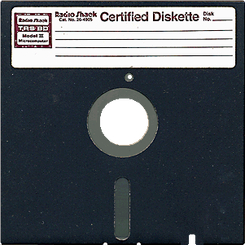 It seems we’ve seen a lot of great concepts from Sony for their PlayStation 3 product line but very little has managed to hit the software virtual shelves. We’ve heard of Sony’s Afrika for the PS3 back at E3 in 2006 and we’re looking at it for 2008’s holiday lineup.
It seems we’ve seen a lot of great concepts from Sony for their PlayStation 3 product line but very little has managed to hit the software virtual shelves. We’ve heard of Sony’s Afrika for the PS3 back at E3 in 2006 and we’re looking at it for 2008’s holiday lineup.
We’ve heard about Sony Home for years as well, but that’s now in some type of beta. It was supposed to be an open beta but that didn’t seem to work out and now it’s closed beta only. Recently they pushed out a firmware update that bricked PlayStation 3 consoles or at least screwed up many of them in varying levels.
Are they just really bad at software development and road map predictions? As a hardware development company they’ve put out some hardcore products, stone cold stable in terms of design and efficiency from the Walk Man to the PS3. Their products are practical in design, for the most part, fairly pretty, stable and function as designed. Yet they come up short on software time and time again.
One of the contributors at 2old2play had some things to say about Sony’s development efforts:
“Having worked at Sony as a Creative Designer two years ago, it doesn’t surprise me that they have still yet to release Home. While there, I was working on their Station Launcher application which was supposed to be released in late 2006. However, the Launcher app is still only in Beta to this day.” (2old2play.com)
In many ways their the anti-Microsoft in their approach and commitments. While Microsoft ships hardware that has what must be a 60% failure rate Sony ships hardware which works fairly well. On the flip side, Microsoft publishes a large quantity of software for all their products and has done very well in the business. Nobody can say it’s 100% perfect but it tends to get better with age or, at least, grow on you.
The difference? As long as our Xbox 360’s stay running we’ve got plenty of great firmware features, Xbox Live community options, online gaming that rarely goes offline and an exciting lineup of games. Now, Microsoft pokes fun at them by providing a fall update feature list which splits the features of Sony’s Home and Nintendo’s Mii system.
Interestingly, one fo the things Microsoft proves strong at is prioritization of their feature “todo” list. While some feel the PlayStation 3 console has some nice features that are 80% finished, the Xbox 360 has less features that are 100% at completion. They’re now going to have the ability to install to the hard disk, a feature PS3 has had since its inception we believe, but what’s more important? Installing to a hard disk or inviting friends to play your game while in game and send them requests to play.
Microsoft puts community features first with a slight handful of optimizations and then back fills their feature list with further optimizations and “nice to have” features around a strong core set. And, for the most part, the features function as designed and rarely require ugly patches on the patches. They’re also set to allow Netflix movies to be downloaded on their product, another great to have secondary feature after their stable core has been established.
Perhaps Sony simply announces product lines too quickly when they still require a great deal of baking or perhaps they’re just a really good hardware company with flaws in software release and roadmaps. This could be a great difference when looking at the future of the potential console war victor.

 It’s amazing to think we’re in our third year of “next generation” console bliss. Three years have passed since the first Xbox 360 shipped, for good or bad, and it’s time to start thinking about the future.
It’s amazing to think we’re in our third year of “next generation” console bliss. Three years have passed since the first Xbox 360 shipped, for good or bad, and it’s time to start thinking about the future.